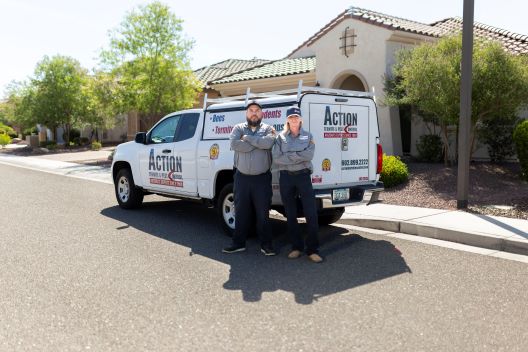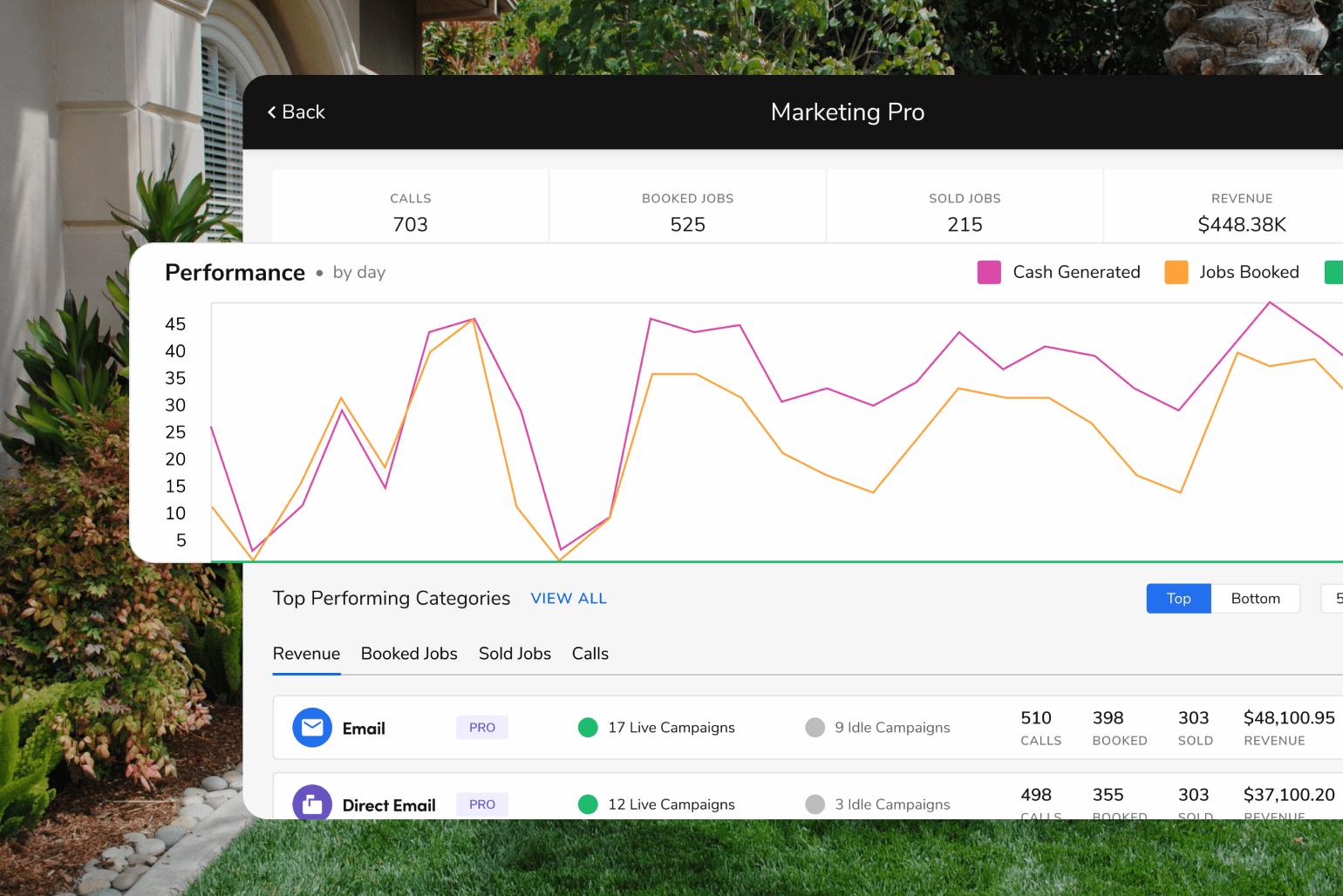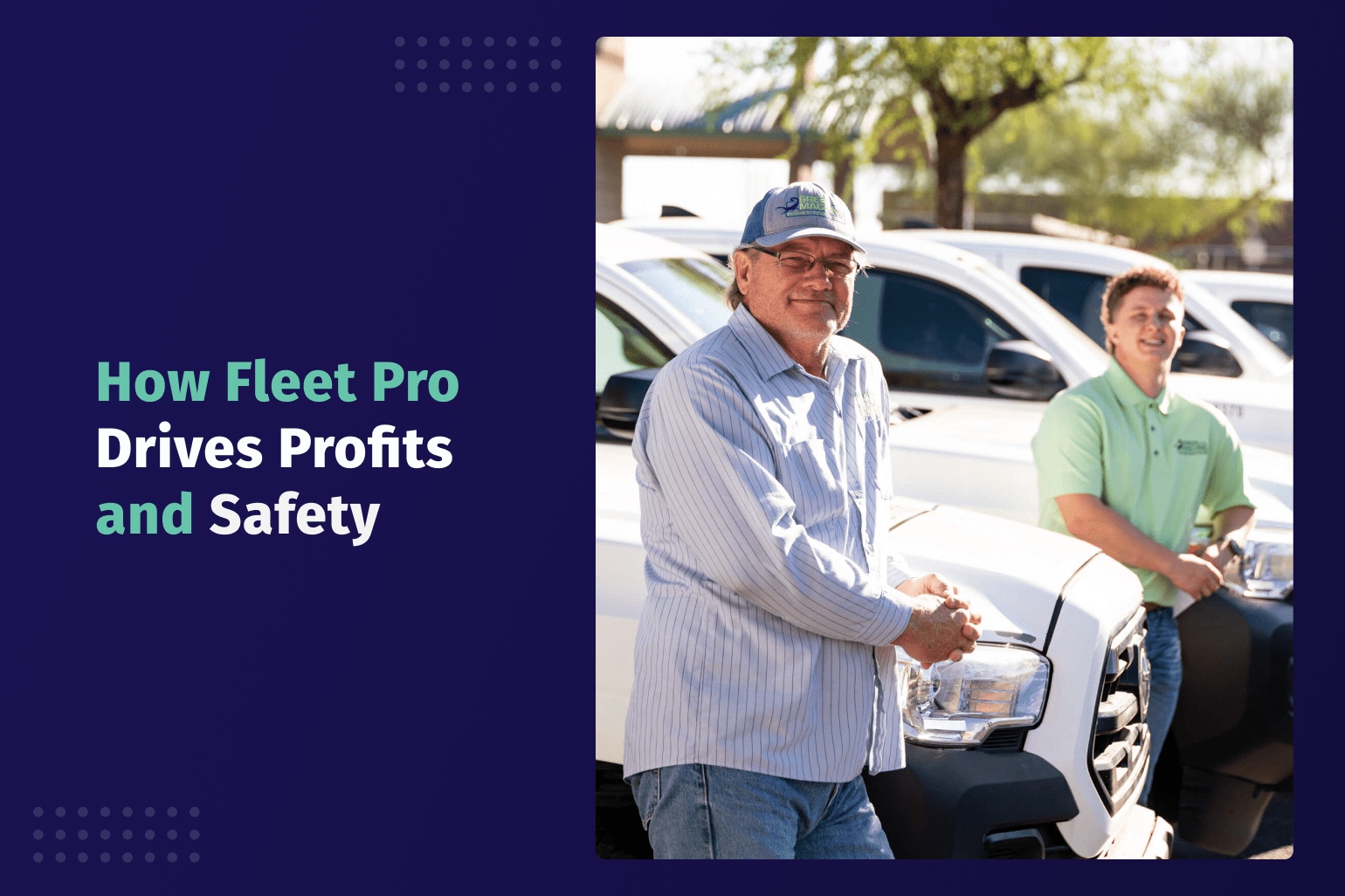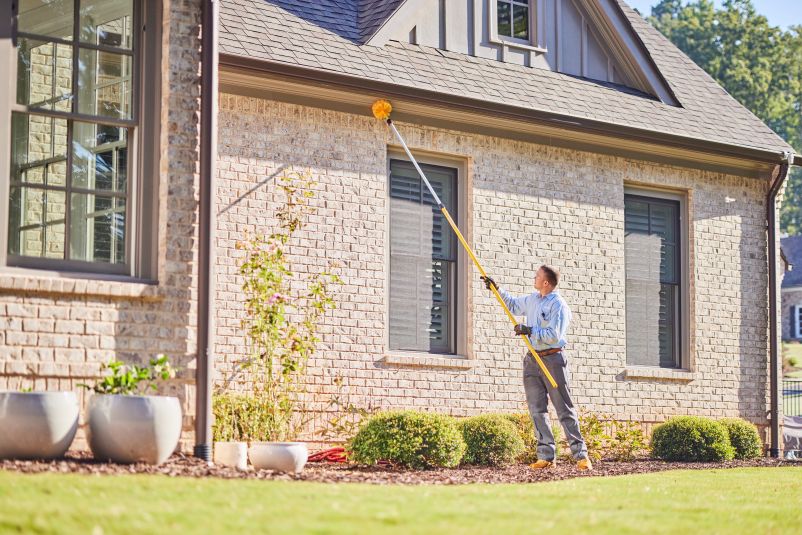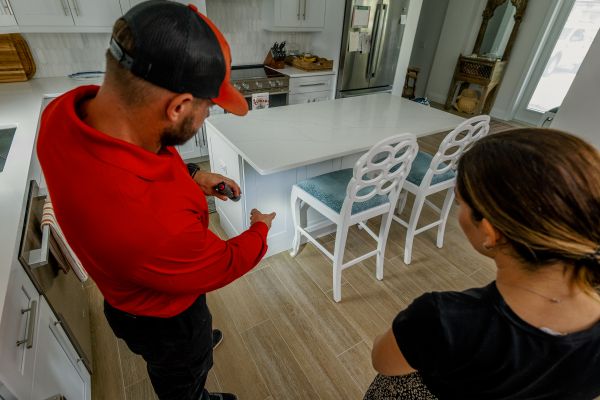8 Pest Control Tools Every Technician & Company Needs (Equipment & Tools)
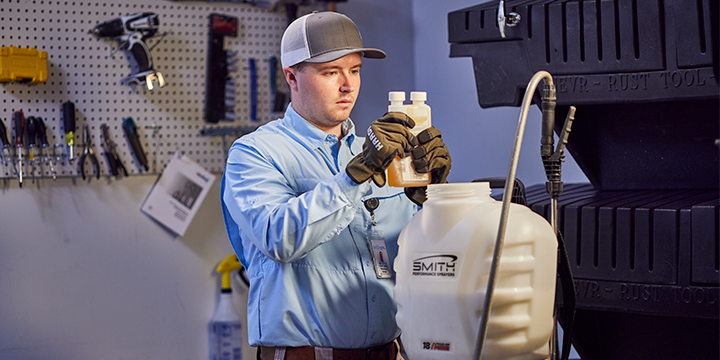
Feeling a bit bugged out when it comes to knowing what pest control equipment to invest in? Whether you’re a beginner pest control technician or starting your own professional pest control company, securing essential tools is critical to effective pest management. To provide quality bug control for customers, pest control professionals search for evidence of pest infestations in every tiny crevice and crawlspace using a variety of tools, ranging from personal protective equipment (PPE) and UV flashlights to bait stations and professional-grade insecticides. Read on for a comprehensive list of the most effective pest control tools every technician and company needs.
What Tools Should Pest Control Technicians & Companies Use?
From ants, fleas, and termites, to bed bugs, cockroaches, and rodents, homeowners and commercial property owners depend on pest control companies to keep their properties pest, insect, and rodent-free. Let’s take a look at a pest control technician’s most essential tools.
Pest Control Tools Techs & Companies Should Use
Foamer
Ultraviolet (UV) Light Traps
Duster
Safety Equipment
Hose
Chemicals/Chemical Sprayer
Bait
Pest Control Software
Below, we explore how each of these tools are used by pest control technicians, how they benefit your pest control operation, and the costs for each.
1. Foamer
Termites, spiders, rodents, and other pests like to hide in void areas or hard-to-reach spaces, such as behind walls and cabinets, so pest control techs need the right tools to apply pesticides, insecticides, and other pest control products into the really tight spaces where they live. A foamer attached to a thin, fine nozzle reaches into small spaces like pipes, wall voids, and surfaces that liquids may not be able to reach.
What is a foamer?
A foamer is a handheld tool that produces foam as it sprays, and comes with a wand, a hose, a reservoir, a pump sprayer or compressor, and a spray tip. Pest control pros use foamers to treat tight, enclosed spaces.
How does a foamer work?
Spray foam works more effectively as a pest repellent because it can seep into every tiny crack and crevice. The foam creates a thin, airtight layer that prevents pests from seeking out any sources of food and water, eliminates nesting areas, and makes it difficult for new pests to get in.
A technician fills the sprayer unit with a pesticide solution, adds the foaming agent, then agitates the solution to activate the foam. Once the foam is activated, the tech may need to hand pump or activate the compressor to produce pressure, then use a fine nozzle to spray the pesticide foam behind walls and cabinets and any other hard-to-reach areas.
Why do you need a foamer?
A foamer works as a slow spreader to fill and treat the confines of those tight spaces your techs are unable to reach, and leaves residual deposits as it slowly breaks down. Unlike liquid pesticides that are affected by gravity and which tend to seek out the lowest level, a shaving cream-like pesticide foam expands and keeps the active ingredient applied to the surfaces you intended.
If using liquid pesticides, a cold or ULV fogger also works to compress pesticides or disinfectants through a specially designed nozzle, producing a fine cold mist or aerosol that distributes more evenly over the surface.
Beyond wall voids and concealed cabinet spaces, pest control technicians also use foamers to treat spots like commercial plumbing floor drains, metal tubing, under slabs, under porches, and even the interiors of metal and brass bed frames to control bed bugs.
What are the benefits of using a foamer?
Foamers help your pest control technicians work more effectively and efficiently to rid pests from your customers’ homes and businesses. Other benefits include:
Foam stays in place longer to be absorbed by surfaces inside the void
Less water used means less wetting and staining
Foam doesn’t drip like liquid and helps to increase your technicians' application accuracy
Foam requires no special safety equipment, other than gloves and safety glasses
How much does a foamer cost?
The cost of a foamer ranges from about $75 to $650. Here are two examples:
$72.95 for a Chapin International 2-Gallon Industrial Foaming Janitorial/Sanitation Poly Tank Sprayer for more DIY, light-duty uses
$640.50 for a B&G VersaFoamer 4000 1-gallon, stainless steel sprayer tank for professional-grade applications.
2. Ultraviolet (UV) Flashlight Traps
We’ve all seen moths or other flying insects hovering around a light source during a summer evening. It occurs because insects are drawn to UV light, typically in search of a mate or food source.
What are UV light traps?
UV light traps come in many forms. Some are free-standing, while others attach to a ceiling or wall. They work by using UV light to attract flies, mosquitoes, and other pests. Once inside the device, glue boards trap the flies, ultimately killing them. Other traps, such as bug zappers, use electricity to kill the insects.
How effective are UV light traps?
UV light traps provide a highly effective form of pest control. Because insects are naturally drawn to UV light, pest control applicators have relied on the device for decades. In fact, most pros recommend keeping them away from patios or heavily trafficked areas as they can invite an influx of pesky pests.
UV light traps use cases
UV light traps are frequently used in restaurants, nursing homes, and hospitals, but are also commonly found in residential and commercial settings. UV traps that use glue boards are more common in indoor settings, while outdoor UV light traps often use electricity to zap pests. The traps provide an effective way to control a variety of pests, including:
Flies
Mosquitoes
Moths
Pest control technicians also use UV flashlights to look for traces of animal infestations in hard-to-see areas, such as crawl spaces. For instance, a UV flashlight uses black light to detect pest urine and feces that may normally be hard to see with the naked eye. These flashlights are commonly used to detect a wide range of pests, from roaches to raccoons.
3. Duster
Pest control chemicals also come in powder form, which are best applied using a duster or bulb duster. It’s an essential little tool that allows techs to easily and quickly apply powder chemicals in any crack, corner, or crevice to eliminate all kinds of flying and crawling pests.
What is a duster?
A duster is a small pest control tool used to pump insecticidal dust into spaces or situations that don’t warrant the use of liquid or foam chemicals. In addition to killing flying and crawling pests, the insecticidal dust settles deep into and kills scorpion infestations, bee and wasp nests, flea and spider eggs, and more.
Why do you need a duster?
Dusters are used to spread dusting powders outdoors or indoors and come in a variety of types, from hand-held models to large tanks. The size and type of pest control treatment you’re applying dictates the size and type of duster you should use.
Here are a few examples of how dusters might be used for pest control:
Scattered outdoors to control ants at the entrance to their nests, or along paths, doorsteps, and window frames.
Scattered outdoors to control wasps at the opening of their nests, preferably in the evening after they have returned to their nests.
Dispersed on the floor and/or area where pets sleep or lie down to control fleas.
Spread along cracks and crevices to control crawling insects.
Brushed into the carpet to control dust mites.
What are the benefits of using a duster?
A quality insecticide duster can be purchased as puffer-style dusters, bulb dusters, mini dusters, hand dusters, and dusters with large tanks powered by electricity or compressors. A duster can help busy pest professionals:
Maximize productivity
Minimize costs
Increase profitability
4. Safety equipment
Working in tight, dark spaces with little ventilation, which may contain pest urine and feces, requires pest control professionals to wear specific personal protective equipment (PPE). In addition, the use of chemical treatments calls for certain safety gear.
What is safety equipment?
Safety equipment refers to the PPE pest control professionals must don to keep themselves safe. Pest control safety equipment includes:
Gloves
Respirator
Helmet
Safety boots
Goggles
Ear protection
Coveralls (Tyvek suits)
While not necessarily gear, pest control techs should wear shoe coverings to prevent moving contaminants.
Why do you need safety equipment?
Pest control PPE provides the following protection:
Gloves: Protects hands from contact with pesticides and bites.
Respirator: Filters out particles from chemicals and pest waste.
Helmet: Prevents head injuries due to falls or falling objects.
Safety boots: Offers protection from spills, falling objects, and stings/bites from below.
Goggles: Protects the eyes from chemical and biological irritants.
Ear protection: Absorbs noise and keeps foreign particles from entering the ears.
Coveralls (Tyvek suits): Protects skin from pest and chemical irritation.
How much does safety equipment cost?
The cost of pest control PPE varies depending on several factors, including the type of PPE, brand, quality, and where you purchase it. Some high-rated options are:
Gloves: Ironclad heavy utility work gloves, $25
Respirator: ANUNU chemical respirator with filters, $20
Helmet: MSA Bump Cap, $6-$20
Safety boots: ROCKROOSTER work boots, $85-$105
Goggles: DEWALT goggles, $16.49
Ear protection: ProCase safety ear muffs, $40
Coveralls (Tyvek suits): DuPont Tyvekcoveralls, $46 for a 6-pack
5. Hose
Pest control technicians commonly apply various chemicals and pesticides, and in some instances herbicides, to eliminate pests or their living quarters. They typically use a hose and backpack sprayer to apply the treatment.
What is a hose?
A hose is used to apply various pest control applications. A technician may use a hand-tank sprayer or backpack sprayer to spread the pesticide evenly. Pest control hoses come in many different forms but often require a retractable reel to keep organized. Some are controlled by motors and remote-control devices, while others are pretty basic, similar to a garden hose, except smaller.
How much does a hose cost?
Due to the wide range of sizes and materials, pest control hoses vary widely in price. For instance, high-pressure hoses often cost several hundred dollars, while more basic hoses cost around $20.
Although it seems like a basic tool, a hose plays an essential role in administering chemicals and other treatments.
6. Chemicals and Chemical Sprayer
Pest control companies commonly use a variety of chemicals and chemical sprayers in the course of administering pest control treatments at homes or businesses.
For best pest management, pest control operators may use either organic chemicals or synthetic chemicals, depending on the type of pests to be eliminated. Organic chemicals are often natural, environmentally friendly, and safer to use in homes where pets and children may be present. Synthetic chemicals may cost less and be easier to source, but may pose health hazards.
Chemical sprayers come in a variety of types, including different sizes of sprayers, tanks, and containers. Before buying, make sure your chemical sprayer is compliant with safety standards and regulations for chemical storage and transport.
What chemicals can be used for pest control?
Commonly used pesticides include:
insecticides (kills insects and other arthropods)
herbicides (kills weeds and other plants that grow where they’re not wanted)
rodenticides (controls mice and other rodents)
fungicides (kills fungi, including blights, mildews, molds and rusts)
Most pest control companies use pesticides called pyrethrins and pyrethroids. Pyrethrins are natural insecticides derived from the chrysanthemum flower. Pyrethroids are more stable synthetic versions of pyrethrins that last longer. Both are effective in getting rid of pests, including mosquitoes, flies, ticks, fleas, and bed bugs. Both are also considered relatively safe for humans and pets.
What are the benefits of using chemicals for pest control?
Using chemicals for pest control benefits our environment and the food supply:
Pesticides help farmers produce more sustainable food.
Pesticides help keep down the cost of food with less insect-ravaged waste.
Pesticides help reduce waterborne and insect-transmitted diseases by controlling rodent and insect populations.
Synthetic or chemical pesticides, in general, tend to be more potent than naturally occurring pesticides.
7. Bait Tools
Pest control professionals use bait tools to manage large infestations of termites, mice, rats, ants, and cockroaches. Baiting systems typically contain substances that attract these pests, along with a lethal poison that releases slowly to kill them over time.
What are bait tools?
Bait tools are used to manage large pest infestations and provide effective, long-term pest control treatment. A good bait system includes a substance that pests like to eat and a lethal poison, along with a variety of other tools, such as concrete drill bats, concrete plugs, and trench shovels.
What are the benefits of using bait tools?
Bait tools provide more effective, long-term treatment to eliminate pests once and for all. Termite baiting tools, for instance, often work better than traditional chemical barriers since they last longer and infiltrate further into the colony. Spraying for ants might kill a few ants, but spray also causes the colony to scatter and makes it more difficult to eliminate these tiny pests. Granules, on the other hand, stay in place longer.
8. Pest Control Software
Besides traditional pest control tools needed to complete a pest control job, technicians can use pest control software with a mobile app to enhance their efficiency, improve customer service, and drive more revenue.
FieldRoutes’ pest control software makes scheduling faster and streamlines customer communication. The tool also provides integrated credit card processing to save time, and vendor integration to help pest control companies facilitate every aspect of their day-to-day operations.
What is pest control software?
Pest control business software makes routing, scheduling, billing, and invoicing faster, easier, and more cost-effective for field service businesses. Software with an easy-to-use mobile app can help to automate your operations, provide seamless communication between the office and technicians in the field, direct your techs to the job on time with superior route optimization, and ultimately drive revenue growth by getting more done in less time.
Why use pest control software?
Some of the main use cases of pest control software are:
Scheduling and dispatching
Credit card processing
Sales and marketing
Customer service
Improve your website SEO rankings
Achieve a better marketing strategy ROI
Pest Control Software Use Cases
Pest control software not only streamlines business processes, but also helps you reach more customers. In this digital age, pest control customers want easy booking systems, easy payment methods, and streamlined communication. With pest control software, pest control companies can provide customer experiences that meet and even exceed the needs of their customers.
What is the best pest control software?
The best pest control software is an all-in-one field service management tool that helps pest control businesses streamline their entire operations, from documenting accurate work orders and tracking customer service history to improving inventory management and growing profit margins. With software to do the heavy lifting, pest control operators can focus on eliminating pests, providing excellent customer service, and identifying new avenues for profitability.
FieldRoutes pest control software stands out among the competition with the following features:
Ease of use, helping employees get up to speed faster
Providing an intuitive business snapshot with a real-time Data Dashboard
Seamlessly connecting the full customer journey from lead to payment
Route optimization and scheduling
Automating reminders, billing statements, account communications, and more
Payments with innovative features like Tech Tipping and AutoPay Trigger Rule*
Integrations with QuickBooks and optional API
Managing and growing the business from the road with the Mobile app
Integrated marketing services to grow your business
*Only available with FieldRoutes Payments
Now Over to You
Pest control companies and their service technicians need an arsenal of tools to keep those pesky pests at bay, service more customers, and grow their businesses. Once you’ve equipped your team with the necessary mechanical tools and pest applications, make sure to deploy pest control software to track and streamline your entire business operations.
FieldRoutes’ field service software helps companies get paid faster, increase sales to boost revenue, and reduce costs with improved efficiency.
Ready to see how FieldRoutes can take your pest control business to a higher level and zap out the competition? Schedule a demo today.
Frequently Asked Questions (FAQs)
Q1. What is the best method for pest control?
Pest control companies most often use chemical pesticides for pest control, due to their effectiveness and reliability. Most chemical pesticides are highly toxic, so train techs to follow mixing and application instructions carefully.
Q2. Is DIY pest control recommended?
No, largely due to the risks DIY pest control poses to your health (poisoning, bites, or stings); to your environment (property damage or eliminating helpful pest species); and to your wallet (costly repairs to your property or wasting money on pest control tools that don’t work).
Q3. How can pest control software help expand my pest control business?
Using pest control software saves you time and money. With automation, technicians increase production, decrease costs, and maximize revenue.
